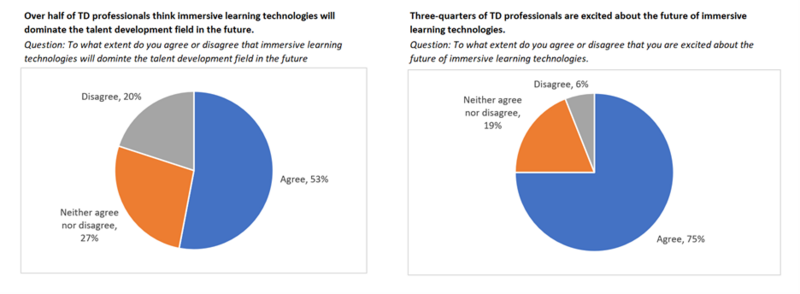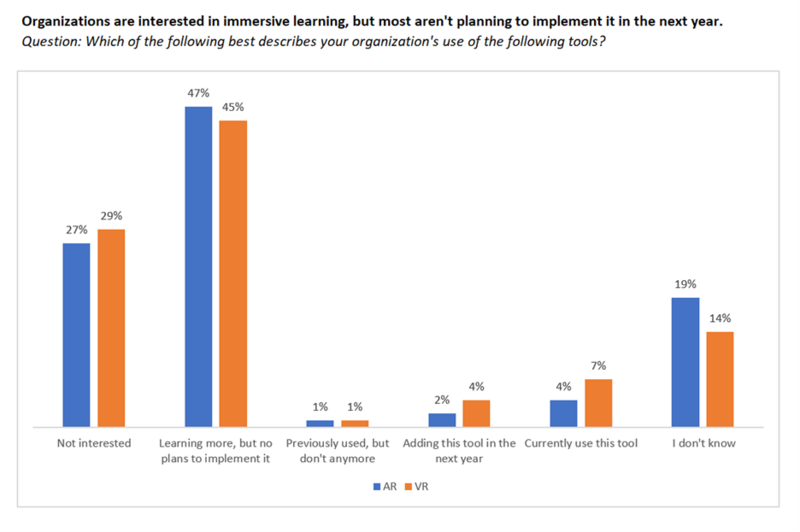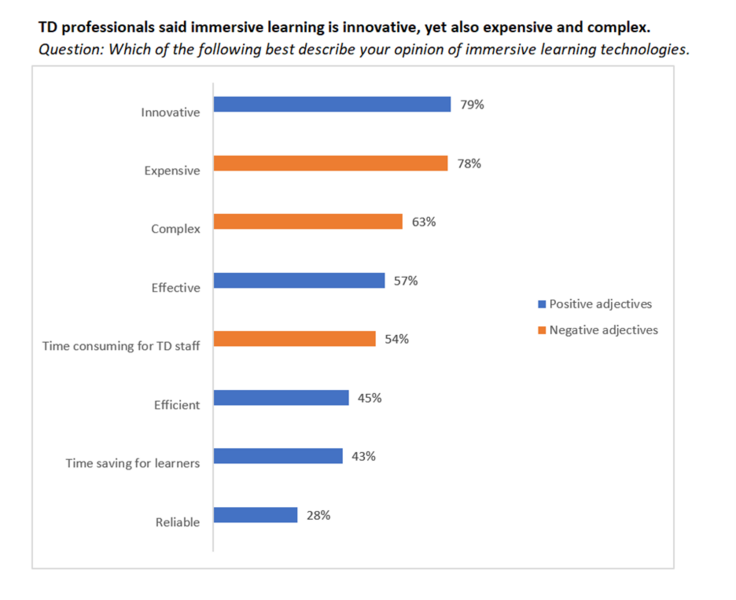ATD Blog
Organizations Are Excited About Immersive Learning—But Not Ready to Commit
Thu Mar 14 2024

Immersive learning has a bright future, with more than half of talent development (TD) professionals agreeing that it will dominate the future of TD.
In its TDBoKTM Guide: Talent Development Body of Knowledge, ATD defines immersive learning as technologies that “allow learners to be immersed so that they are, or feel as if they are, experiencing the actual learning environment.” This includes augmented reality, virtual reality, or a combination of both. The TDBoK Guide defines these technologies this way:
Augmented reality (AR) “overlays digital information into real-world environments through a mobile or head-mounted device. This information may include navigation directions, location information, or a wide range of other location-based details.”
Virtual reality (VR) “is a computer-generated simulation that uses a head-mounted display to give learners the ability to explore a fully rendered digital environment and manipulate objects with handheld controls and voice commands. This tool allows learners to perform skills in a realistic, engaging simulation of a real-life environment.”
ATD Research surveyed 225 talent development professionals to understand their usage of and opinions about immersive learning technologies such as AR and VR.
Three-quarters of TD professionals are excited about the future of immersive learning technologies. As explained in an interview with Lorne Novolker, vice president of digital learning services at Calian, organizations are motivated to use immersive learning because “it gives the learner an amazing opportunity to try and to fail in a safe environment.”

Although organizations are excited about immersive learning, that enthusiasm hasn’t yet translated into companies implementing the technology. Our study found only 4 percent of organizations used AR, and 7 percent used VR. Nearly half of organizations wanted to learn more about it.

TD professionals think immersive learning is an innovative yet expensive form of learning. Two of the top three adjectives TD professionals selected to describe immersive learning are unfavorable—expensive and complex. But nearly four in five respondents said that it was an innovative way of learning. Lorne Novolker discussed how this innovative technology provides an authentic experience for participants. “The ability to have the realism of practice and applying what you’ve learned, with the ability to fail and learn safely, while also giving the user the opportunity to retry until getting the task right—immersive learning has an innovative component to it,” he said.
More than half of respondents said it was effective but time-consuming for TD staff to implement and manage. Novolker explained, “The development might be slightly longer \[compared to more traditional learning modes\], but it doesn’t have to be significantly longer. From an implementation perspective, it shouldn’t take much more time.”

Lorne Novolker had these final thoughts for organizations considering implementing immersive learning: “The future is now. Immersive learning technology has come a long way, and the platforms have improved. All you have to do is put on a pair of AR or VR goggles, and you can see how incredible a learningexperience it is.”
